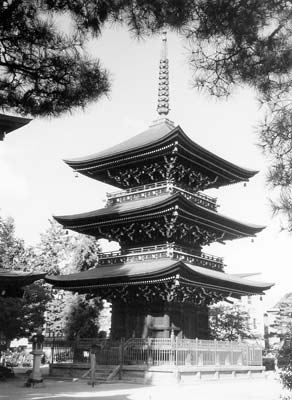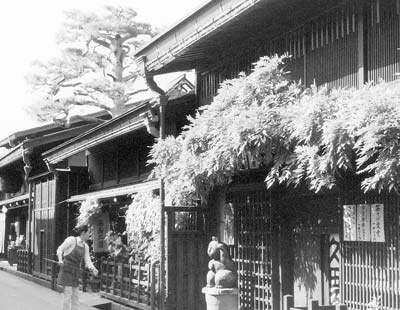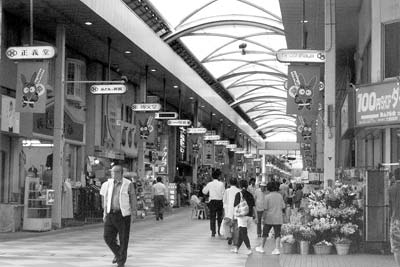Affordable Japan
by Charles Longo, Tucson, AZ
Japan appeared on my radar screen a number of years ago — when the U.S. Navy granted me a free trip for just signing on the dotted line. A post-college career in Hawaii with frequent assignments on nearby Guam provided opportunities to eventually see the country from top to bottom. But poor yen/dollar exchange rates recently pushed Japan to “News Watch” status, so I sought better-value destinations.
My “yen” for Japan, however, never wavered, and a 2-week sojourn in September ’06 confirmed the results of my research: Japan is again affordable!
Going places
Concentrating on southern Japan, I chose Continental Airlines’ (www.continental.com) flight from Los Angeles to Nagoya for two reasons: an affordable $992 round-trip price tag and an allowed Hawaii stopover on my return trip. Purchasing a Japan Rail Pass plus gathering lots of Internet-generated info (rail schedules, hotel reservations and things to do and not to do) helped lower my overall cost and travel time.
The connecting flight from Honolulu (aboard Continental Micronesia) landed at the wonderful Central Japan International Airport at about 5 p.m., a perfect time to allow me to adjust to the new time zone and lost day.
An overnight at the airport-connected Comfort Hotel (www.choicehotels.com), at $85 single/double or 8,000 award points, including full breakfast, allowed time to locate an ATM, prepare for the next day’s onward journey and get a quick first impression of Japan and its people.
Nagoya’s eye-popping train station is about an hour from the airport (bus fare, ¥1,000, or $8.50) and, like similar stations in Hakata and Kyoto, it is a city within itself. Japan in general is a 24/7 country, blanketed with convenience stores, making it easy for visitors to fulfill needs and wants anytime of the day or night.
A railpass voucher, which must be purchased outside the country (available from the Japan Travel Bureau; www.jtbusa.com or www. japanrailpass.net), costs about $400 for two weeks of unlimited travel (a 3-week pass is also available) on all Japan Rail trains except the super-fast Nozomi.
Any major Japan Rail station will exchange the voucher for an actual pass. With pass and route material in hand (preplanning saves lots of time), I marched over to a ticket counter where a friendly agent reviewed the routing info I had obtained on the Internet (http://grace.hyperdia.com) — travel times, train numbers, platforms, departure time and, if required, where and when to change.
After verifying my proposed schedule, I quickly had my reservation tickets (where needed and at no additional cost). These tickets displayed departure and arrival times and the car and seat numbers; a little common sense was the only remaining need.
When traveling by train in Japan, don’t rush! Japanese trains come and go to the same destinations often, sometimes using the same tracks and platforms for departures/arrivals minutes apart. Rushing in Nagoya put me, in error, on a not-allowed-with-my-pass Nozomi rather than the merely fast Shinkansen bullet train.
Fortunately, kind people and an understanding conductor got me off in Kyoto and onto the correct train that had departed Nagoya minutes later but by now had lost 30 minutes to the super-fast Nozomi.
Takayama
To ease into Japan, I chose to visit Takayama, a village in the Japanese Alps about two hours from Nagoya. The Best Western Hotel Takayama (6-6 Hanasatocho; www.bestwestern.com) offered a great single rate — stay three nights and pay for two ($67 per night for a single room with buffet breakfast).
Most reviews I read about hotels in Japan complained about the room sizes, but, comparing prices and sizes with those of similar European hotels, I found Japanese hotels and their rates to be better. Overall, my single rooms provided oversized beds, refrigerators, water heaters with tea and/or coffee, and the infamous push-button toilets (beware: the wrong button could deliver a surprise).
My selected hotels also offered full or Continental breakfast, coffee at any time and free, rarely busy lobby Internet access.
Takayama was wonderful for rest and adjustment after my long journey. Visitors love the area’s mountain setting and its festivals and history. Nearby Hida Folk Village (buy the bus ticket, including entrance fee, at the train station) is filled with reconstructed houses moved there from around the region, all with extremely pitched thatched roofs similar to those in Bavaria (and for the same reason: snow).
With Takayama’s dividing river and daily farmers’ markets, where you will be offered samples (don’t worry; just chew, swallow and enjoy), I was reminded of a German village.
Sasebo
A sentimental journey to Sasebo, a major naval area on the southern island of Kyushu, ranked high on my things-to-accomplish list. The journey from Takayama, however, is long in distance and time, so I chose Hakata for an overnight break.
Across from Hakata’s futuristic station awaited another Comfort Hotel ($46 single, with Continental breakfast). A quick look-see around the joined cities of Hakata and Fukuoka was enough to make me want to return to see more.
The next day I “disembarked” in Sasebo after a fast 2-hour journey south. Sasebo’s naval history began years ago, continuing under the Americans during WWII and the Korean War. Americans remain, but Japan seems to be the major player here once again.
Some “99” islands (actually over 200, but “99” signifies “many” to the Japanese) dot Sasebo’s beautiful bay, making it reminiscent of Palau. The area’s beauty, crowned by Sakai National Park, is a major tourist draw, as is its reputation for gourmet hamburgers (a brochure depicted 14 locations!).
Sasebo’s Washington Hotel (www. wh-rsv.com/english/sasebo/index. html), part of a business-hotel chain, was great. If reserved a week ahead, a single runs $57 per night, including buffet breakfast; a credit-card guarantee is not required.
Nagasaki and Kyoto
Nagasaki, a short train ride along the sea from Sasebo, reminded me of a “gentle” San Francisco. Its bay and bridge and quaint trolleys made the comparison even more surreal. This city is traveler-friendly, with easily digestible history and trolley-accessible sites.
Again, a Comfort Hotel (and, again, $46 single) offered suitable digs in the best location, in this case, near Dejima Wharf.
Kyoto, like Venice, is every traveler’s “must see,” but I found it difficult to find the “there” there. Even finding the Comfort Hotel ($48 single) proved difficult, and the central area did not seem central, to me.
It is easy to overdose on temples and palaces in Kyoto, but Nara (40 minutes away by hourly trains) provided a much-needed escape. From its small station, Nara can be covered easily on foot, with time to appreciate its many treasures: temples, free-roaming deer, green parks and mountains. Nara exceeded my expectations in all respects, but it was Kyoto’s super-deluxe central station, rather than its tourist attractions, that made my chin drop in wonder.
Nagoya is a short train ride from Kyoto, so I elected to stay overnight in Kyoto before returning to the airport for my evening departure to Honolulu.
My lasting impressions of Japan are of the cheerful and helpful people everywhere; clean hotel rooms and public rest rooms; easily understood menus featuring pictures and/or mockups; the world’s best rail system (sorry, Germany); drinkable tap water everywhere, and, overall, reasonable prices.
There must be pockets of graffiti, homelessness, trash, clutter and other distractions around the country, but I did not see any of it.
No matter what the yen/dollar ratio, I see another visit to Japan in my near future. Travel costs can always be controlled with a little effort and planning.





